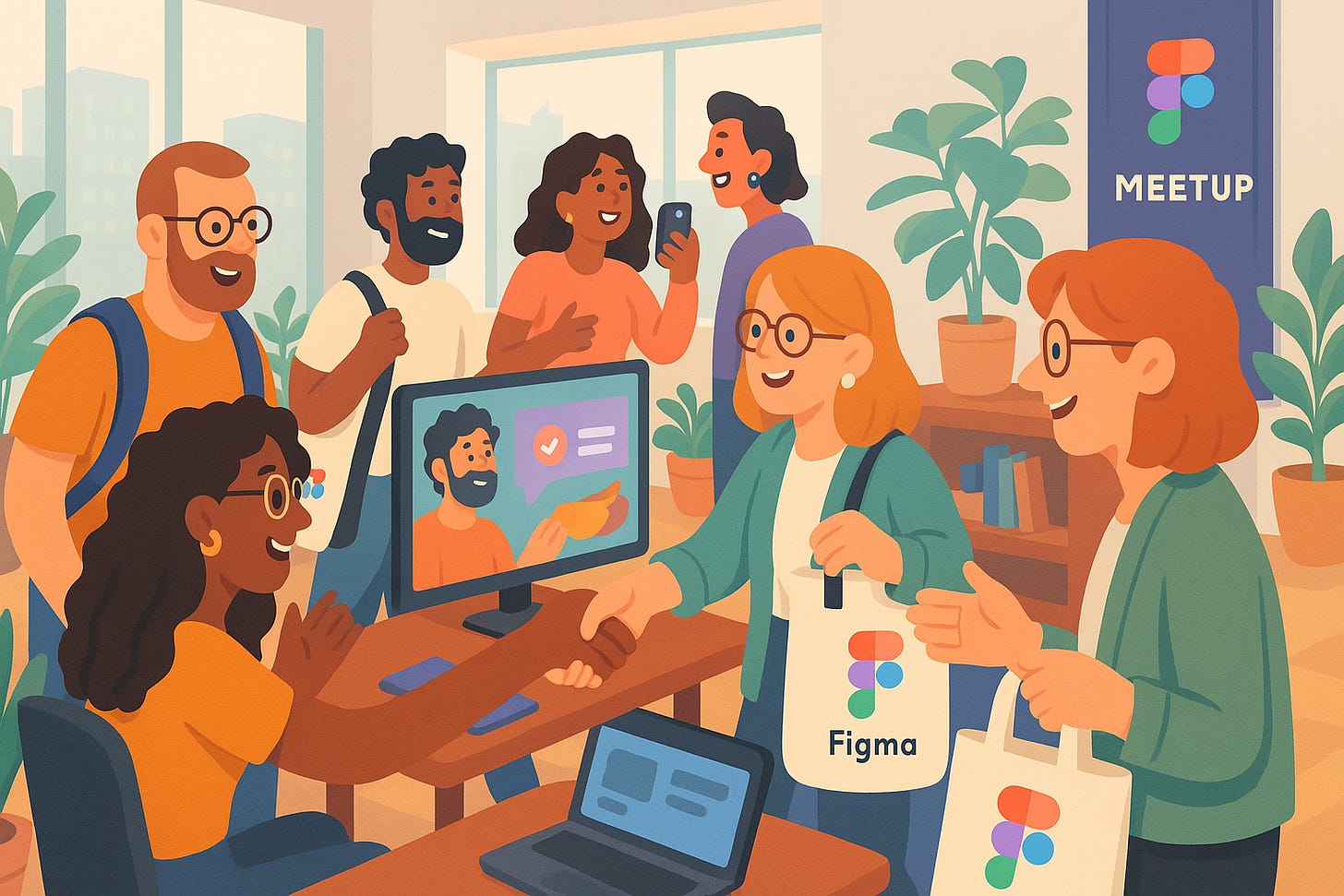Figma’s $20B Growth Engine: A Playbook You Can Steal
How Figma turned designers into co-builders - using community to spark adoption, fuel growth, and transform a design tool into a $20B global movement.
When you think of companies that rewrote the rules for growth, Figma should be near the top of the list. They didn’t just build a great product - they built a movement. And they did it without massive ad spend, cold calling, or top-down enterprise sales.
Their secret, as you’d expect from this newsletter - was turning their community into their most powerful growth engine.
Here’s their story - and the actionable lessons you can apply to your own product.
1. Start Before You Launch
Most founders wait until launch day to think about community. Figma started years earlier.
While still in stealth mode, CEO Dylan Field and his early team embedded themselves in existing design communities - Twitter threads, Slack groups, meetups. They reached out to designers one by one, asking for honest feedback on early builds. They didn’t pitch - they listened.
By launch day, they already had a circle of influential designers who felt invested in Figma’s success. These weren’t just beta testers - they were future evangelists.
Your move: Find where your audience already hangs out. Join the conversation early. Build real relationships before you have anything to sell.
2. Launch With Your Community, Not At Them
In December 2015, Figma came out of stealth. Instead of blasting a press release into the void, they mobilized the relationships they’d built.
On launch day, those early designers lit up Design Twitter. Some raved, some criticized, but everyone was talking.
Figma embraced it all - even putting the most brutal early tweets on their About page years later. The buzz was real because it came from the community, not the company.
Your move: When it’s time to launch, activate your early believers. Let them speak in their own voice - it’s more credible than anything you can say.
3. Keep the Magic Free
Figma’s “aha” moment was real-time collaboration - seeing multiple people editing a file together.
Their first pricing model put a cap on it for free users. They quickly realized this was killing growth. So they flipped it: unlimited collaboration was free, forever.
That decision made it effortless for users to invite colleagues. Every invitation was a viral growth loop.
Your move: Identify your magic moment and make it frictionless to experience. Even if it means giving away your most impressive feature.
4. Turn Users into Contributors
In 2019, Figma launched plugins and the Figma Community - a public hub where anyone could share files, templates, and design systems.
This wasn’t just a feature drop. It was an invitation for users to add value to the platform and to each other. Designers built plugins, shared UI kits, and remixed each other’s work. The product became more useful every day - without Figma’s team writing a line of code.
Your move: Create ways for users to build, share, and get recognition. The more they invest in your ecosystem, the stickier your product becomes.
5. Let Champions Sell for You
By the time Figma hired its first salesperson in 2019, teams inside Microsoft, Google, and Uber were already using it - often without official approval.
Figma didn’t push top-down sales. They empowered individual designers to champion Figma inside their companies. Sales reps acted more like customer success partners, helping internal advocates make the business case.
Your move: Find the users who love you most. Supply them with the tools, data, and stories they need to win over their colleagues - and reward them for it.
6. Listen, Pivot, and Ship What They Ask For
Figma’s community wasn’t just a marketing channel. It was a product steering committee.
They launched earlier than planned because the community was ready. They reversed pricing decisions that hurt adoption. They built features like FigJam because they saw users hacking the product for whiteboarding.
And when Adobe announced it would acquire Figma in 2022, the first communication Dylan Field wrote was an open letter to the community.
Your move: Treat your community like partners. Show you’re listening by acting on their feedback - and being transparent when you can’t.
The Bottom Line
Figma’s $20B valuation wasn’t the result of a single genius growth hack. It was the compounding effect of years spent building trust, empowering users, and making community the core of their go-to-market strategy.
They proved that:
Community isn’t an afterthought - it’s a mindset from day one.
Doing things that don’t scale can spark love that does scale.
The fastest way into the enterprise might be through your most passionate individual users.
If you want a product that markets itself, take a page from Figma:
Build relationships early.
Launch with your community.
Keep your magic moment free.
Let users contribute.
Empower champions.
Listen and adapt.
It’s not easy. It takes patience and humility. But if you do it right, your users won’t just adopt your product - they’ll fight for it.
Enjoyed this? Follow “Community as a Feature” for more stories on building communities that power product growth. And if you’re adding social features to your app, check out Replyke.com to save months of dev time.




Loved it.